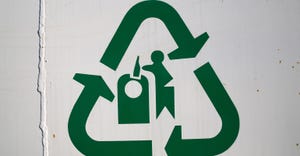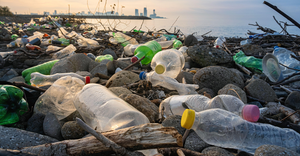Just three months ago, organizations that press for the greening and recycling of computers and other plug-ins were composing an epitaph for the wonky but effective Electronic Product Environmental Assessment Tool. It read: RIP, EPEAT.
Those funeral plans were canceled, however, on June 10 when the federal government evidently resurrected EPEAT by altering a recent executive order that outlines the federal government’s sustainability plans for the next decade.
Barbara Kyle, national coordinator for the Electronics TakeBack Coalition, says she is elated and relieved that the Obama administration listened and responded to an eco-detail that could easily have been lost in a paperwork shuffle.
“This matters because the federal government is the biggest purchaser of electronics in the country,” Kyle says. “We want to make sure federal dollars are going toward the greenest possible products because it’s a lot of dollars.”
What Kyle interpreted as an oversight by the White House was buried on pages 56 and 65 of the 77-page executive order initially released on March 19. Most of executive order 13693, “Planning for Federal Sustainability in the Next Decade,” spells out specifications for energy and water use, carbon emissions and alternative fuels. It takes effect in October 2016, the start of a new fiscal year.
Colleagues alerted Kyle that, unlike previous executive orders on green topics, the newest iteration made no mention of EPEAT as the label federal agencies should refer to for electronic purchases. They feared the lapse would allow federal agencies to follow subpar standards and also invite electronics companies or industry associations to set easier to meet, weaker labels they touted as green.
EPEAT is managed by the nonprofit Green Electronics Council, based in Portland, Ore. While it is not a government standard, it had its beginnings 14 years ago when the EPA awarded a grant for developing a tool for an electronics environmental assessment via stakeholder consensus. Representatives from manufacturing, public and private purchasing, environmental advocacy, academia, government and the recycling sector collaborated on the project, which launched in 2005.
In early April, Kyle sent a letter to the White House on behalf of her Oakland-based coalition’s 30-plus partner and member organizations. In addition, her efforts were backed by public and private institutional purchasers who count on the EPEAT label for guidance.
“It’s important to recognize that the electronics industry is one of the least sustainable sectors on the planet, using enormous quantities of energy, critical minerals, water, and hazardous chemicals,” she wrote on April 6 to Kate Brandt, the federal environmental executive. “With little focus on designing products that will be long-lasting, safe, and easy to upgrade or refurbish, these manufacturers guarantee an astonishing churn of resources unlike any other sector.”
Companies meeting EPEAT standards can significantly reduce the amount of e-waste generated because their designs minimize hazardous substances and encourage recycling and reuse, Kyle says.
Brandt agreed to meet with Kyle and her coalition partners in late April. Per Brandt’s request, Kyle sent more detailed information in a follow-up letter.
On June 10, the White House issued what is basically an addendum to the executive order, known as “implementing instructions” in government-speak.
Those instructions clarified that federal agencies can use standards other than EPEAT only if the EPA doesn’t already have a recommended standard for the product category. They also made it clear that even though the executive order does not mention EPEAT, “EPEAT is currently the only tool available to achieve the electronic stewardship mandates.”
“On its Web site, the Environmental Protection Agency always recommends EPEAT,” Kyle says, adding that she is satisfied with the clarifications. “If for some reason, the EPA doesn’t recommend EPEAT, then that will be trouble on the horizon, but I have no reason to believe that will change.”
Duncan Neasham, a spokesman with a Washington, D.C.-based trade association, the Information Technology Industry Council, says that he could not comment on the record about EPEAT and the executive order.
In response, he forwarded an explanation that the White House’s Council on Environmental Quality issued upon releasing the executive order in March, stating that it “establishes sustainability criteria that the federal community should use to help with product selection, management and disposal, and it avoids endorsement or recommendation of any particular non-federal label. The administration will continue to work with private and non-governmental sector standards bodies to ensure the federal community has adequate information to continue to promote electronic stewardship across the Federal government.”
Executive orders are unlike the federal rulemaking process, which requires a period for public comment before a final rule is released.
Kyle knows it is rare for an executive order to be amended so she’s pleased Brandt and other White House officials were receptive to her arguments.
“We’re glad they reconsidered,” she says. “They told us they weren’t trying to undermine EPEAT. But their initial language, as innocent sounding as it might have been, was troubling to us.”
About the Author(s)
You May Also Like


